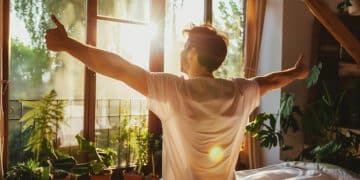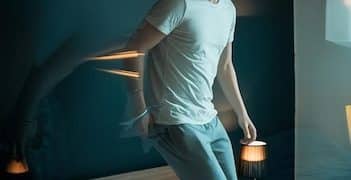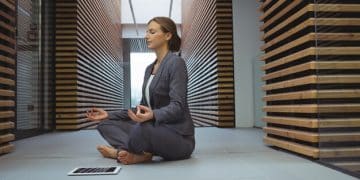Blue Light Filters: New Research Shows They Might Not Be Enough
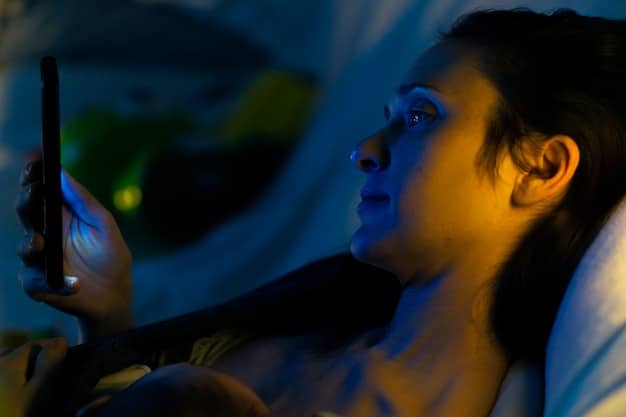
New research indicates that blue light filters may not fully protect sleep as effectively as once believed, suggesting additional measures are needed to mitigate the impact of screen time on sleep quality.
Are blue light filters really protecting your sleep? New research suggests that relying solely on them might not be enough. Let’s dive into what the science says about blue light filters and their effectiveness.
Understanding blue light and its impact on sleep
Blue light, a component of the visible light spectrum, is emitted by electronic devices such as smartphones, tablets, and computers. Understanding its effect is essential to protect our health. But how exactly does blue light affect our sleep patterns?
The science behind blue light’s effects
Blue light can suppress the production of melatonin, a hormone that regulates sleep. This disruption can lead to difficulty falling asleep, reduced sleep duration, and poorer sleep quality. The sensitivity to blue light varies among individuals. Now let’s understand better the science behind its effects:
- Melatonin suppression: Blue light inhibits melatonin secretion, delaying the onset of sleep.
- Circadian rhythm disruption: Exposure to blue light in the evening can shift the body’s natural sleep-wake cycle.
- Increased alertness: Blue light can stimulate brain activity, making it harder to relax before bed.
Limiting exposure to blue light, especially in the evening, is crucial for maintaining a healthy sleep schedule. This is not just about reducing screen time but also understanding the type of lighting used in our homes.
The promise of blue light filters
Blue light filters have emerged as a popular solution to mitigate the adverse effects of blue light on sleep. These filters, available as software, screen protectors, and glasses, are designed to block or reduce the amount of blue light reaching the eyes. But how effective are they really?
Types of blue light filters available
There are various types of blue light filters, each designed to serve a specific purpose. They include:
- Software filters: Applications and built-in settings on devices that reduce blue light emission.
- Screen protectors: Physical filters applied to device screens to block blue light.
- Blue light glasses: Glasses with lenses that filter out blue light.
While these filters can reduce blue light exposure, recent research indicates that their effectiveness may be limited compared to what many users believe. The key is to understand which filters are best suited for individual needs.
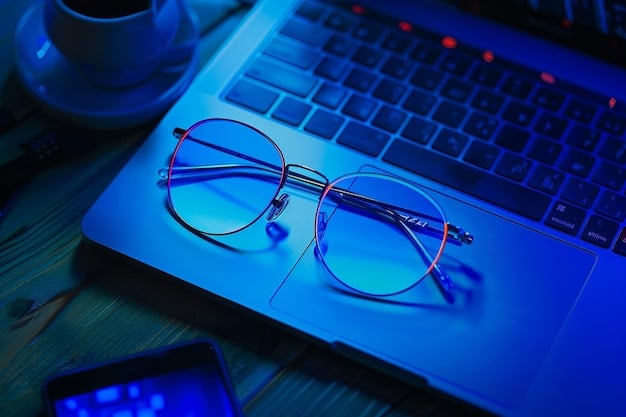
New research findings: are filters enough?
Recent studies have cast doubt on the ability of **blue light filters** to fully protect sleep. According to these findings, while filters can reduce blue light, they may not completely eliminate its disruptive effects on melatonin production and sleep quality. This has led researchers to explore additional strategies.
Key studies and their conclusions
Several studies have explored the effectiveness of blue light filters. Here are some key findings:
- Study A: Found that blue light filters had a minimal impact on sleep quality compared to reducing screen time.
- Study B: Revealed that while filters reduced blue light exposure, melatonin levels were still affected in some participants.
- Study C: Concluded that behavioral changes, such as avoiding screens before bed, were more effective than relying solely on filters.
These studies suggest that a multi-faceted approach, including both blue light reduction and lifestyle adjustments, is necessary for optimal sleep protection.
Beyond filters: holistic strategies for better sleep
Given the limitations of **blue light filters**, adopting a holistic approach to sleep hygiene is essential. This involves implementing various strategies to create a conducive environment for quality sleep. What else can you do to enhance your sleep?
Effective sleep hygiene practices
Here are some simple practical steps you can take to create a more conducive sleep environment:
- Establish a consistent sleep schedule: Go to bed and wake up at the same time every day, even on weekends.
- Create a relaxing bedtime routine: Include activities such as reading, meditating, or taking a warm bath.
- Optimize your sleep environment: Ensure your bedroom is dark, quiet, and cool.
Combining these practices with mindful tech use can significantly improve your sleep quality and overall well-being.
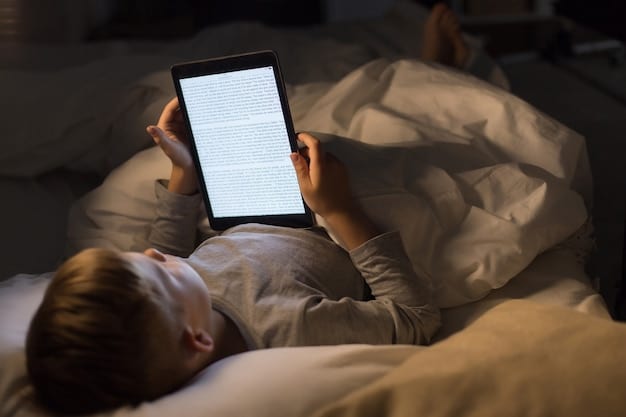
Mindful tech use for improved sleep
Practicing mindful tech use is critical for enhancing sleep quality. This involves being aware of how technology impacts your sleep and making conscious choices to minimize negative effects. How can we use technology more mindfully?
Practical tips for mindful tech habits
Consider these simple, yet effective approaches to improve your tech habits:
- Limit screen time before bed: Avoid using electronic devices at least one to two hours before sleep.
- Use warm light settings: Switch to warmer light settings on devices to reduce blue light emission.
- Take breaks from screens: During the day, take regular breaks from screens to reduce eye strain and mental fatigue.
By integrating these habits into your daily routine, you can reduce technology’s negative impacts on your sleep and enjoy more restful nights.
The future of sleep technology
As research continues to evolve, the future of sleep technology looks promising. Innovations in wearable technology, smart lighting, and personalized sleep solutions are paving the way for more effective strategies to improve sleep quality. What innovations can we look forward to?
Emerging trends and innovations
Some trends and innovations in sleep technology include:
- Wearable sleep trackers: Devices that monitor sleep patterns and provide personalized insights.
- Smart lighting systems: Lights that adjust color temperature and brightness to promote relaxation.
- Personalized sleep apps: Applications that offer customized sleep recommendations and guided meditations.
These advancements offer exciting possibilities for individuals seeking to optimize their sleep and overall health.
| Key Point | Brief Description |
|---|---|
| 💡Blue Light Effects | Disrupts melatonin production, affecting sleep quality. |
| 🛡️Filter Limitations | May not fully protect sleep as effectively as believed. |
| 🌙Sleep Hygiene | Essential for creating a conducive sleep environment. |
| 📱Mindful Tech | Limiting screen time before bed improves sleep. |
FAQ
▼
Blue light is a high-energy visible light emitted by digital screens. It can disrupt the body’s natural sleep-wake cycle by suppressing melatonin, making it harder to fall asleep and stay asleep.
▼
While they can reduce blue light exposure, recent research shows they may not completely block its disruptive effects. Their effectiveness varies, and they may not be sufficient on its own for some individuals.
▼
Establishing a consistent sleep schedule, creating a relaxing bedtime routine, ensuring a dark, quiet, and cool sleep environment, and practicing mindful tech use can all help improve sleep quality.
▼
Limit screen time before bed, use warm light settings on devices, take regular breaks from screens during the day, and be aware of how technology impacts your sleep patterns to adopt healthier habits.
▼
The future includes wearable sleep trackers, smart lighting systems, and personalized sleep apps designed to offer customized solutions for enhancing sleep quality and overall health through innovative approaches.
Conclusion
While blue light filters can be a helpful tool, they are not a standalone solution for sleep problems. By combining filters with holistic sleep hygiene practices and mindful technology use, you can create a comprehensive strategy for achieving better sleep and overall well-being.

